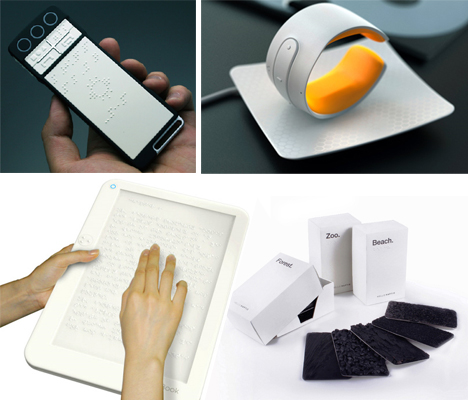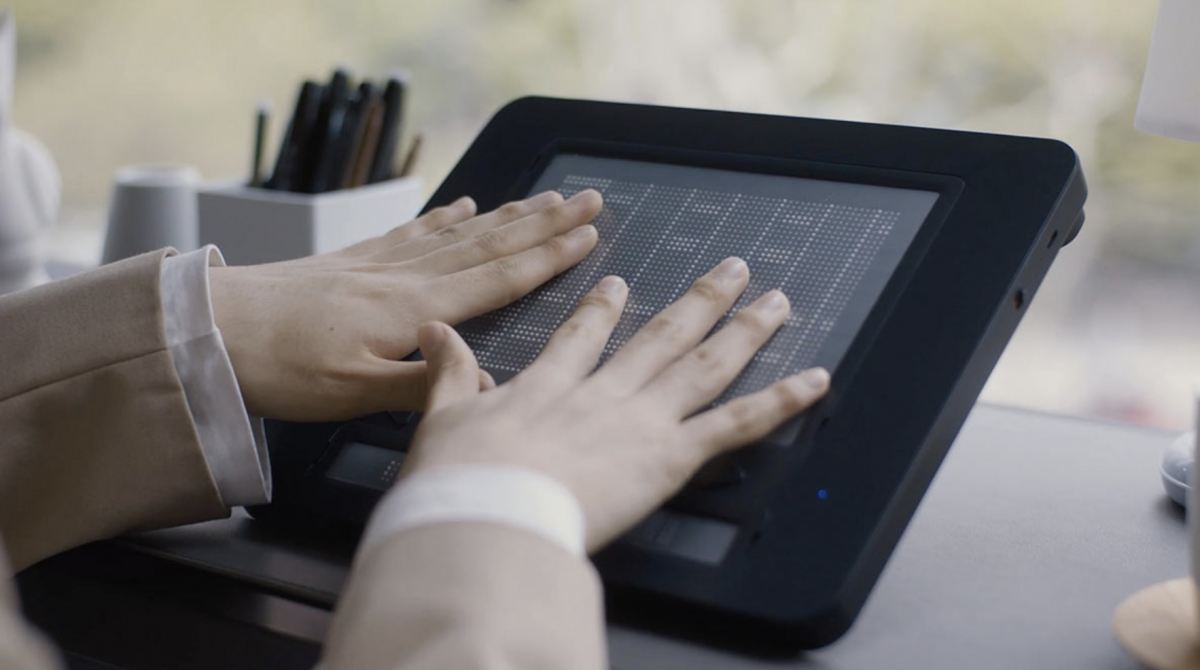Speech-to-Text Devices for Low Vision: Bridging the Communication Gap
Speech-to-Text Devices for Low Vision: Bridging the Communication Gap
Blog Article
A Guide to Life-Changing Assistive Technology for the Blind and Visually Damaged
The development of assistive technology has actually introduced a transformative era for individuals that are blind or aesthetically impaired, offering devices that enhance freedom and enrich daily experiences. Developments such as smart navigation devices and AI-driven applications are redefining exactly how customers engage with their environments, while available analysis solutions and wise home modern technologies promise to further raise the lifestyle. As these modern technologies remain to progress, one have to take into consideration not only their performances yet additionally their influence on fostering freedom and inclusivity. What does this mean for the future of access?
Smart Navigation Devices
Smart navigation tools are revolutionizing the means people who are blind or visually impaired communicate with their setting. These sophisticated innovations, which incorporate general practitioners, audio responses, and haptic signals, provide individuals with essential info concerning their surroundings, improving their independence and wheelchair.
One prominent example is using smart walking canes outfitted with sensors that discover barriers and give real-time responses via vibrations or audio cues. These devices allow users to browse intricate environments, such as busy streets or crowded public spaces, with boosted self-confidence. Additionally, wearable tools, such as clever glasses, are being created to aid in acknowledging faces, reading message, and recognizing items, additionally increasing the user's spatial understanding.
In addition, wise navigation devices are progressively incorporating fabricated intelligence to evaluate data and adapt to individuals' preferences. This customized strategy not only boosts navigating efficiency however additionally promotes a sense of empowerment amongst customers. As innovation remains to breakthrough, the capacity for wise navigation tools to create an extra easily accessible and comprehensive world for individuals that are blind or visually impaired continues to be encouraging, inevitably improving their daily experiences and communications.
Cutting-edge Mobile Applications
Mobile applications are becoming effective devices for helping individuals that are visually damaged or blind, using a variety of functionalities that enhance daily living. These apps harness progressed technology to assist in everyday jobs, improve ease of access, and advertise freedom.
One group of cutting-edge mobile applications concentrates on visual acknowledgment. Applications like Be My Eyes link individuals with sighted volunteers using video telephone calls, making it possible for real-time support for tasks such as checking out tags or navigating unknown settings. Applications like Seeing AI utilize artificial knowledge to describe surroundings, read message, and identify objects, providing individuals with critical details at their fingertips.
Another substantial area is navigating and orientation. Applications such as Aira and Close-by Traveler provide audio guidance, helping users navigate city areas with convenience. They provide customized support, enabling an extra certain expedition of the setting.
In addition, wellness and health apps satisfy particular needs, such as medicine administration and physical fitness tracking. These applications aim to cultivate an alternative technique to health, making sure that individuals can keep their wellness individually.
Wearable Assistive Tools
Wearable assistive devices represent a substantial improvement in innovation developed to sustain individuals that are blind or aesthetically impaired. These gadgets boost flexibility and self-reliance by providing real-time responses about the surrounding atmosphere. Amongst one of the most remarkable wearable technologies are clever glasses equipped with electronic cameras and sensors, which can determine obstacles and relay critical information with sound hints.

One more ingenious alternative consists of wrist-worn tools that use ultrasonic waves to identify challenges and provide navigational help. These devices commonly feature adjustable settings, permitting individuals to tailor the signals to their particular demands.
The combination of artificial intelligence in wearable assistive technology is additionally significant, as it continuously boosts the accuracy and responsiveness of these tools. In general, wearable assistive gadgets are changing the lives of the aesthetically impaired and blind, cultivating higher freedom and improving quality of life via cutting-edge remedies.
Accessible Reading Solutions
Easily accessible reading solutions play an essential role in allowing individuals that are blind or aesthetically impaired to involve with text throughout various styles. These options include a series of tools and modern technologies made to enhance analysis experiences, from traditional print materials to electronic material.
One prominent option is Optical Personality Recognition (OCR) modern technology, which transforms published text right into digital layout, permitting users to pay attention to or read the content utilizing display readers. In addition, specialized e-readers click this link geared up with text-to-speech capabilities supply adjustable reading experiences, making it possible for customers to change font sizes and background colors for enhanced visibility.
An additional effective approach is braille displays, which give responsive comments by converting digital text right into braille. This permits people to go through touch, cultivating greater self-reliance and access to literature. In addition, mobile applications developed for checking out checked records or books can empower individuals with instant accessibility to a vast collection of products.

Smart Home Technologies
Smart home innovations have actually reinvented the means people that are aesthetically impaired or blind communicate with their living settings, improving both freedom and security. These cutting-edge services take advantage of automation and connectivity to produce an accessible living space customized to the demands of individuals.
Smart audio speakers and voice-activated aides give hands-free control over various devices, permitting customers to adjust protection, temperature level, and illumination steps via basic voice commands. This capability reduces reliance on sighted support and promotes a feeling of freedom. In addition, clever illumination systems can be tailored to supply auditory feedback or responsive cues, making it possible for people to navigate their homes more effectively.
In addition, protection systems geared up with clever video cameras and sensors can send out real-time notifies to individuals, enhancing personal safety and security without requiring visual verification. Automated door locks use assurance, enabling individuals to safeguard their homes effortlessly.
Incorporating clever home innovations not just boosts day-to-day living yet additionally urges social interaction through connected gadgets - Speech-to-text devices for low vision. With recurring advancements in assistive innovation, the future appears appealing, as more options will emerge to more empower individuals who are blind or Get More Info aesthetically damaged, ensuring a more comprehensive and independent way of living
Final Thought
To conclude, the innovations in assistive technology for the blind and visually damaged stand for a substantial leap towards enhancing self-reliance and lifestyle. Smart navigation devices, innovative mobile applications, wearable tools, accessible analysis options, and clever home technologies collectively cultivate an inclusive atmosphere. This integration of innovation not just boosts wheelchair and daily living but also empowers individuals to involve completely with their surroundings, promoting higher freedom and involvement in culture.
Developments such as smart navigating devices and AI-driven applications are redefining how individuals communicate with their environments, while accessible analysis solutions and clever home modern technologies assure to additional boost the quality of life. As innovation continues to advance, the capacity for clever navigation tools to create an extra accessible and comprehensive globe for people who are blind or aesthetically impaired continues to be encouraging, eventually improving their day-to-day experiences and interactions.
Wearable assistive gadgets stand for a substantial advancement in modern technology created to support people who are blind or visually impaired. Among the most noteworthy wearable modern technologies are wise glasses furnished with electronic cameras and sensors, which can determine obstacles and relay vital details via audio signs.
Smart navigation devices, innovative mobile applications, wearable devices, available analysis solutions, and wise home technologies collectively foster an inclusive setting.
Report this page